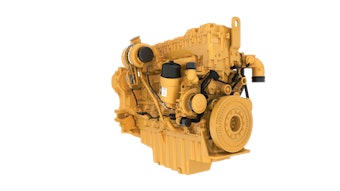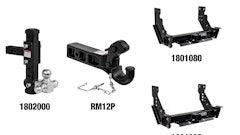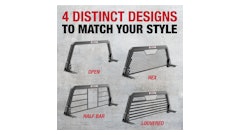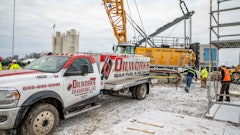
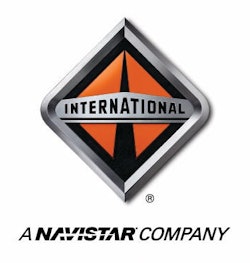
Navistar International Corporation (NYSE: NAV) reported a third-quarter 2013 net loss of $247 million, or $3.06 per diluted share, compared to third quarter 2012 net income of $84 million ($1.22 per diluted share).
Excluding discontinued operations, Navistar recorded a third-quarter loss from continuing operations of $237 million, or $2.94 per diluted share, compared to third-quarter 2012 income from continuing operations of $80 million, or $1.16 per diluted share. Third-quarter 2012 results included an income tax benefit of $188 million that primarily resulted from a change in the company's estimated annual effective tax rate.
The year-over-year decline was primarily driven by lower volumes in its core North America truck business due to the impact of the company's transition to SCR-based products and weaker industry conditions. This was partially offset by a $36 million reduction in engineering and product development costs and $14 million in lower selling, general and administrative expenses.
Total revenue in the quarter was $2.9 billion, down 12 percent from the third quarter of 2012. The decline reflects lower net sales across all classes of its core truck business, due to the impact of the company's SCR emissions transition for both heavy- and medium-duty vehicles and a nine percent drop in overall industry demand in North America during the quarter. This was partially offset by stronger year-over-year volumes in the South America engine business.
Navistar finished the third quarter 2013 with $1.09 billion in manufacturing cash and marketable securities, delivering at the high end of its cash guidance range of $1.0 billion to $1.1 billion, as a result of strong cash management and working capital performance.
"We were pleased with our strong cash performance in the quarter. We also continued to make solid progress on key elements of our Drive to Deliver turnaround plan, especially the on-time launches of our new Class 8 product offerings, which drove Navistar's order share up to more than 20 percent in the quarter, compared to 12 percent in the second quarter. We're encouraged by the growing customer acceptance of our new products," said Troy A. Clarke, Navistar's president and chief executive officer. "At the same time, we clearly need to accelerate progress with our financial results, and we are already implementing additional cost reduction and business improvement actions to counter our near-term volume challenges. This includes resizing our company to match our current business environment."
Earlier this month, the company began implementing new cost-reduction initiatives, including an enterprise-wide reduction in force, which will impact a combined 500 salaried employees and long-term contractor positions globally. The company expects to complete nearly all of these job reductions by the end of its 2013 fiscal year, and projects these and related activities will generate an additional $50 to $60 million in annual savings starting in its fiscal year 2014.
"These actions are always difficult, but we are committed to making tough choices to return Navistar to profitability," Clarke added.
The company is also dedicated to moving forward quickly on the next critical product strategy phase in its turnaround—offering selective catalytic reduction (SCR) emissions aftertreatment on its medium-duty vehicles. Just yesterday, Navistar announced plans to expand its medium-duty engine offerings to include the Cummins ISB 6.7-liter engine for International DuraStar and IC Bus CE Series vehicles. The company's first saleable units will be built this month and Navistar has set an okay-to-ship date for trucks in late December.
"Adding the Cummins ISB allows us to get medium-duty SCR offerings into the market faster while providing customers with a market-proven engine," said Jack Allen, Navistar's executive vice president and chief operating officer. "We expect it will open the door to new customers, while strengthening demand with existing ones. In fact, a number of customers had already approached us about adding this choice. As a result, we're convinced the ISB will put us on a positive path to recapture medium-duty truck and school bus sales and market share."
As for fourth quarter guidance, the company projects it will finish the year with manufacturing cash and marketable securities in the range of $1.0 billion to $1.1 billion.
Segment Reports
Truck – For the third quarter 2013, the truck segment reported a loss of $58 million, compared with a $26 million loss for the same period one year ago, on lower net sales of $1.92 billion, a 15 percent decrease year-over-year. The segment's loss was primarily driven by a decline in traditional truck volumes due to lower industry conditions and the impact of the company's emissions transition, as well as lower military volumes and service revenue. The loss was partially offset by lower engineering and product development costs and lower SG&A expenses.
Engine – For the third quarter 2013, the engine segment reported a loss of $86 million, compared to a $47 million loss in third quarter 2012. Net sales were 14 percent lower year-over-year at $723 million. The loss was driven by lower volumes in the United States and higher adjustments to pre-existing warranties and partially offset by reduced engineering and product development costs.
Parts – For the third quarter 2013, the parts segment reported a profit of $76 million, a four percent improvement versus third quarter 2012, despite a nine percent decline ($51 million) in net sales year-over-year. Lower SG&A expenses more than offset the impact of lower military parts sales.
Financial Services – For the third quarter 2013, the financial services segment profit was $23 million, up slightly versus third quarter 2012, despite net revenues being down five percent year-over-year, as a result of the ongoing transition of retail loans to GE Capital. Overhead cost reductions more than offset the lower net interest margin amount.


